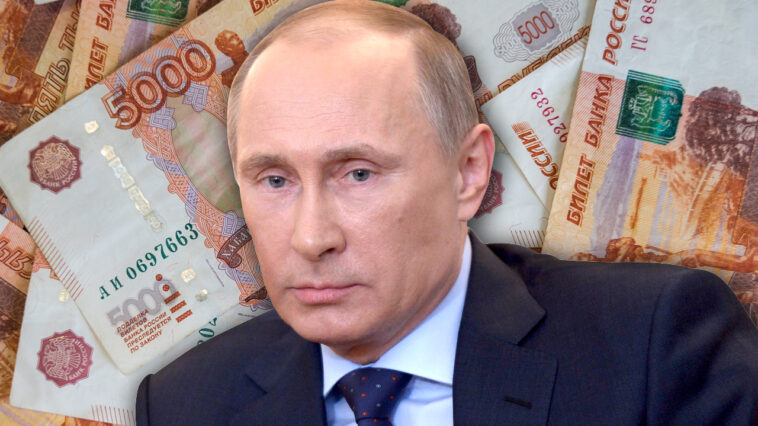While the U.S. dollar has soared in value against a basket of worldwide fiat currencies, Russia’s ruble climbed 4.5% against the greenback this week. During the first week of September, Russia told the press China would pay for natural gas with rubles and yuan. Moreover, Switzerland’s imports of Russian gold reached a high not seen since April 2020.
The Greenback Is Soaring, but Russia’s Ruble Is Also Rising Higher
This week the U.S. Dollar Currency Index (DXY) skyrocketed to new heights leaving a great number of fiat currencies worldwide badly bruised. For instance, two days ago, the European Union’s euro tapped a 20-year low against the U.S. dollar dropping to $0.973 on Friday.
Presently, the euro is even lower at $0.9690, and it is down 2.82% against the greenback during the past 30 days. 30-day statistics indicate the yen is down 4.72%, the sterling pound shed 8.17%, and the Canadian dollar lost 4.78%. The Chinese yuan breached a 7:1 exchange rate against the U.S. dollar for the first time in two years.
However, Russia’s native fiat currency the ruble has been more resilient this year, and it started to see gains a month after the start of the Ukraine-Russia war. Toward the end of June, Russia’s ruble tapped a seven-year high against the U.S. dollar, and at the time economists said “don’t ignore the [ruble’s] exchange rate.”
This Friday, while America’s native fiat currency climbed to new heights against various currencies worldwide, the ruble climbed 4.5% against the USD. The ruble managed to do this while the DXY breached a 20-year high following the Federal Reserve’s recent rate hike. The rising ruble follows Russian president Vladimir Putin explaining earlier this week that he vows to use “all means available” to win the war with Ukraine.
China Pays for Gas With Rubles, Swiss Purchases 5.7 Tons of Russian Gold in August, Analyst Says Ruble Withdrawals Have Pushed the Currency Higher
There were also hints of nuclear retaliation from the Russian president, and he detailed he was mobilizing more troops. Additionally, Reuters reported during the first week of September that China would be purchasing fuel from Russia with rubles and yuan payments.
Gazprom CEO Alexei Miller told the press at the time that China paying in rubles and yuan rather than dollars was “mutually beneficial” for both partners. Furthermore, reports indicate that the Swiss Federal Customs Administration revealed Switzerland imported 5.7 tons of Russia’s gold reserves in August. The stash was worth roughly $324 million, and the Swiss have not purchased a cache that size in over two years.
The country’s customs department, however, claims that the Russian gold originally stemmed from Britain, and it further stressed that no financial sanctions were violated. Switzerland fully denied breaking any sanctions and said the 5.7 tons of bullion was originally shipped from the U.K. back in May.
While the ruble’s exchange rate against the greenback has dropped a hair, it remains at 56.87 per dollar, at the time of writing on Sunday, September 25, 2022. While 30-day stats show the euro is currently down 2.82% against the U.S. dollar, the Russian ruble is up 4.32% this month.
Investing.com’s Geoffrey Smith says the surge for cash derived from Russians withdrawing massive amounts of money from their savings accounts. Smith further claims “Russians emptied their savings accounts in the wake of Wednesday’s mobilization call by President Vladimir Putin.”
He noted, however, that the surge in Friday’s ruble withdrawals was not nearly as large as the ruble withdrawals recorded last February. “The rise in demand for rubles led to a squeeze in interbank ruble rates, pushing the currency up in a market,” Smith wrote on Friday.
What do you think about the Russian ruble’s exchange rate skyrocketing this Friday and gaining 4.32% this month against the greenback? Let us know what you think about this subject in the comments section below.
https://news.bitcoin.com/while-the-us-dollar-tramples-the-euro-pound-and-yen-russias-ruble-skyrockets-against-the-greenback/





